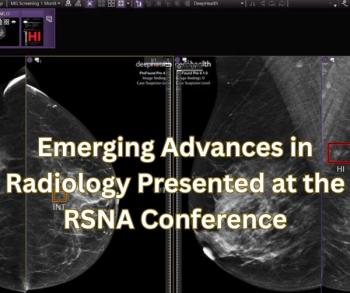
Atypical Imaging in Autoimmune Pancreatitis Lessens Accuracy in MDCT
Multi detector computed tomography for autoimmune pancreatitis may not provide fully accurate diagnosis if abnormalities are detected.
Atypical imaging features in autoimmune pancreatitis can diminish the diagnostic accuracy of multiple detector computed tomography (MDCT) in differentiating autoimmune pancreatitis, pancreatic ductal adenocarcinoma, and acute interstitial pancreatitis, according to a study published in the
Researchers from the David Geffen School of Medicine at UCLA, Ronald Reagan UCLA Medical Center and the UCLA School of Public Health in Los Angeles, CA, and Yale School of Medicine in New Haven, CT, sought to identify the most common imaging features of autoimmune pancreatitis and to evaluate the utility of MDCT for differentiating autoimmune pancreatitis from pancreatic ductal adenocarcinoma and acute interstitial pancreatitis.
The researchers evaluated MDCT images from 39 patients with autoimmune pancreatitis, 25 with pancreatic ductal adenocarcinoma, and 27 with acute interstitial pancreatitis. They were looking for distribution of pancreatic abnormality, sausage shape, low-attenuation halo, pancreatic duct dilatation, peripancreatic stranding, lymphadenopathy, biliary abnormality, vascular involvement, and renal lesions.
The results showed that sausage shape and low-attenuation halo were the most common imaging features found in autoimmune pancreatitis (25 [64%] and 23 [59%], respectively), while pancreatic duct dilatation and biliary dilatation were most frequent in pancreatic ductal adenocarcinoma (20 [80%] and 11 [44%], respectively). In interstitial pancreatitis, the most frequent finding was peripancreatic stranding (22 [81%]).
“Sausage shape, low-attenuation halo, and absence of a pancreatic duct or biliary dilatation differentiated autoimmune pancreatitis from pancreatic ductal adenocarcinoma with an accuracy of 0.88,” the authors wrote. “Sausage shape and absence of peripancreatic stranding differentiated autoimmune pancreatitis from acute interstitial pancreatitis with an accuracy of 0.82. There was no significant difference in the frequency of vascular involvement or of lymphadenopathy among these diagnoses.”
The researchers concluded that there should be a high index of suspicion for autoimmune pancreatitis should there be pancreatic abnormalities on imaging. Further diagnostic workup could be suggested by radiologists, including correlation with serum immunoglobulin 4 level and tissue sampling, to potentially prevent unnecessary surgery.
Newsletter
Stay at the forefront of radiology with the Diagnostic Imaging newsletter, delivering the latest news, clinical insights, and imaging advancements for today’s radiologists.




























